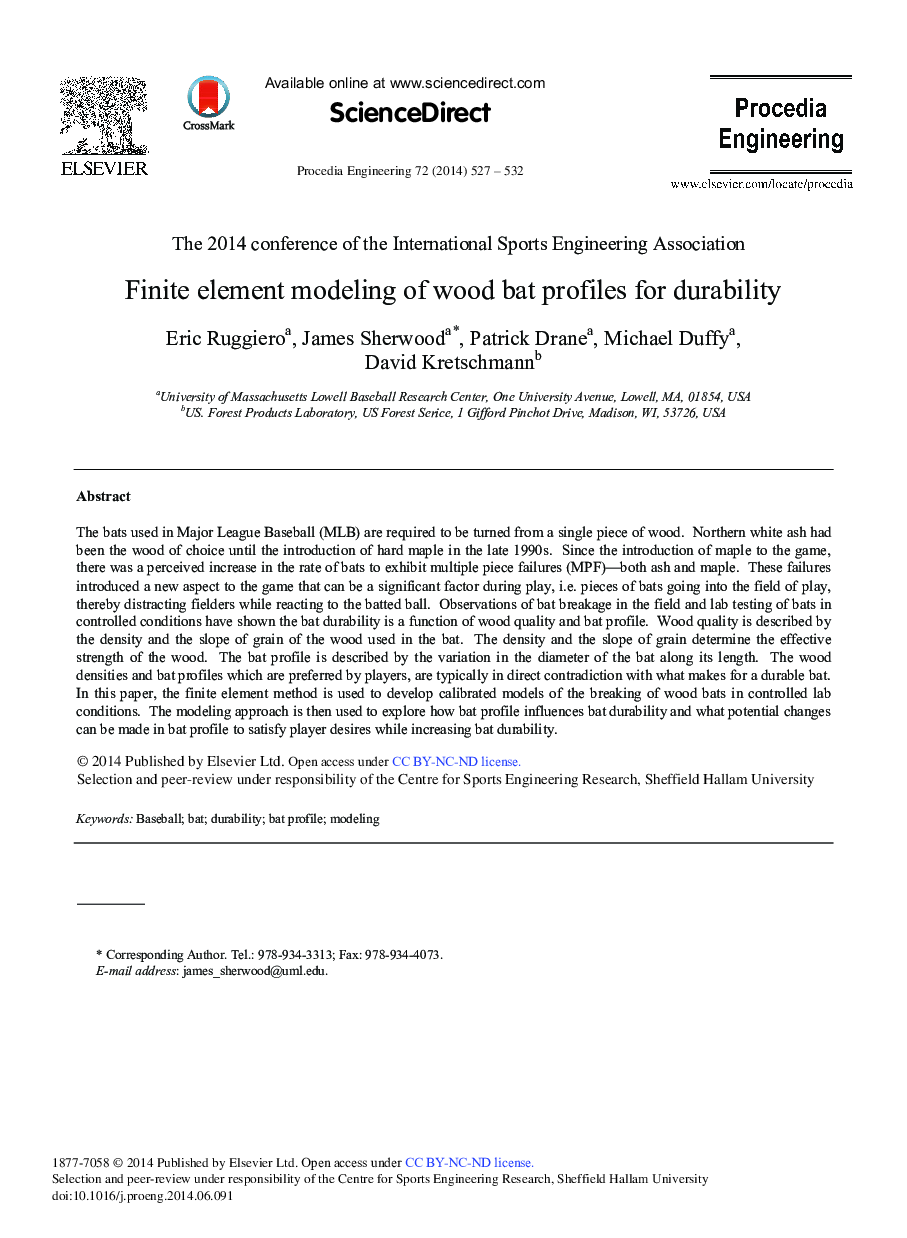| Article ID | Journal | Published Year | Pages | File Type |
|---|---|---|---|---|
| 859004 | Procedia Engineering | 2014 | 6 Pages |
The bats used in Major League Baseball (MLB) are required to be turned from a single piece of wood. Northern white ash had been the wood of choice until the introduction of hard maple in the late 1990s. Since the introduction of maple to the game, there was a perceived increase in the rate of bats to exhibit multiple piece failures (MPF)—both ash and maple. These failures introduced a new aspect to the game that can be a significant factor during play, i.e. pieces of bats going into the field of play, thereby distracting fielders while reacting to the batted ball. Observations of bat breakage in the field and lab testing of bats in controlled conditions have shown the bat durability is a function of wood quality and bat profile. Wood quality is described by the density and the slope of grain of the wood used in the bat. The density and the slope of grain determine the effective strength of the wood. The bat profile is described by the variation in the diameter of the bat along its length. The wood densities and bat profiles which are preferred by players, are typically in direct contradiction with what makes for a durable bat. In this paper, the finite element method is used to develop calibrated models of the breaking of wood bats in controlled lab conditions. The modeling approach is then used to explore how bat profile influences bat durability and what potential changes can be made in bat profile to satisfy player desires while increasing bat durability.
